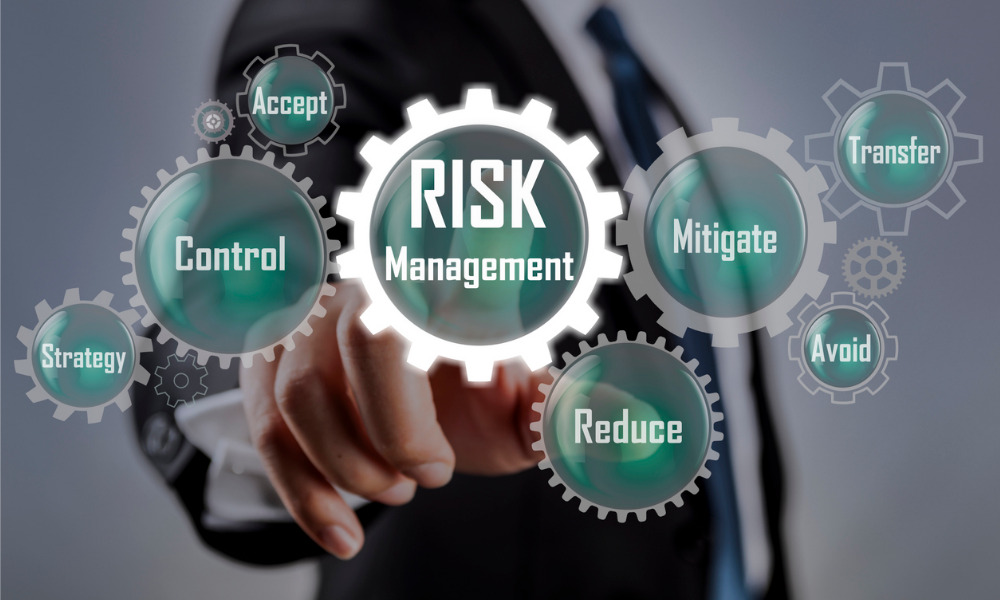When law meets security, it’s like a complex dance that’s super important for keeping things safe and sound. This guide is here to clear up the fog around what the law says, what you need to do to keep in line, and how to manage risks if you’re in the security game.
It’s not just about dodging fines—it’s about building trust, doing the right thing, and keeping everything under your watch safe. Whether you’re a pro in security or just starting out, getting the hang of the legal bits is key to setting up strong security that does its job without stepping over legal lines.
Part 1: Getting the Legal Lay of the Land

1.1 The Big Picture of Legal Rules
For folks working in security, there’s a whole mess of laws and rules that change depending on where you are and what kind of work you’re doing. You’ve got big-deal federal laws that cover stuff like national security and keeping data safe, and then there are state laws that get into the nitty-gritty, like how to handle biometric data. And don’t forget about international laws like the GDPR if you’re dealing with data protection and privacy outside the US. Understanding these regulations is crucial not only for compliance but also as part of comprehensive executive protection training. This kind of training ensures that security professionals are not just physically prepared but also legally savvy, which is essential for making sure your security plans are on the up and up.
1.2 The Nitty-Gritty Laws You Should Know
There are some big-name laws like the GDPR in Europe and HIPAA in the US that are super important for security folks. GDPR is all about keeping personal data private and giving people control over their info, so you’ve got to be tight on data protection. HIPAA is about keeping health info safe, which affects healthcare folks and their business pals. Knowing these laws inside out means you can keep your security tight and avoid legal headaches.
1.3 Keeping Up with Changing Laws
The rulebook for security and law is always getting updates—new tech, changes in society, and court decisions can all mix things up. Staying ahead means keeping your ear to the ground with legal updates, hanging out in industry groups, and chatting with legal pros. Keeping up helps you tweak your security game plan to stay in line and keep everything safe.
Part 2: Playing by the Rules
2.1 What’s the Deal with Compliance Standards
Compliance standards like ISO 27001, PCI DSS, and NIST are like roadmaps for dodging security risks and keeping data under lock and key. But it’s not just about ticking boxes for the sake of it; these standards are the gold standard for beefing up your security game. Knowing what each standard asks for helps you build security that not only follows the law but is also tough as nails against threats. Following these standards shows you’re serious about keeping things secure, which is a big plus for clients and everyone you work with.
2.2 Putting Rules into Action
Following the rules isn’t just about sticking to a list; it’s about weaving these standards into the day-to-day of your organization. This means taking a hard look at risks, setting up clear security rules, putting solid security measures in place, and making sure everyone’s in the know through regular training. Building a culture where security is part of the everyday means you’re less likely to run into vulnerabilities and better at protecting data.
2.3 Checking Your Work: Audits and Assessments
Regular check-ups through audits and assessments are key to making sure you’re following all the rules and standards. These check-ups aren’t just about spotting weak spots; they’re a chance to make your security even stronger. Getting ready for an audit means going over your security policies, procedures, and controls with a fine-tooth comb to make sure they’re up to snuff. Dealing with any issues quickly and effectively shows you’re committed to staying secure and compliant.
Part 3: Managing Risks and Legal Stuff

3.1 Risk Management is Key
When it comes to following the law, managing risks is all about spotting, sizing up, and dealing with anything that could threaten security or get you into legal hot water. It’s not just about stopping bad stuff from happening; it’s about understanding what could go wrong legally if something does slip through the cracks. Good risk management means your security does its job in keeping threats at bay while also making sure you’re not stepping over legal lines.
3.2 Dodging Legal Bullets
Steering clear of legal trouble means putting a full-on security plan in place, including things like encryption, keeping tabs on who can get to what, having a game plan for when things go wrong, and making sure everyone’s clued up on security. Getting the legal side of things right for your industry and what you do means you can cut down the chances of getting tangled up in compliance issues, fines, legal fights, and taking a hit to your reputation.
3.3 Learning from Oops Moments
Looking at legal faceplants and compliance oopsies in the security world can teach you loads about what not to do and how to keep your security and legal game strong. These stories underline why it’s so important to have solid security, be ready to jump into action if something goes wrong, and talk straight with everyone involved. Learning from these slip-ups can help you tighten up your security and compliance, lowering the chance of legal headaches and boosting protection.
Part 4: Making Protection and Compliance Part of the Everyday
4.1 Keeping Daily Ops in Line with the Law
Making sure legal compliance is baked into your everyday security moves is crucial for keeping a strong security stance. This means regular check-ups on security policies, keeping an eye on security systems non-stop, and quick updates to security moves when new legal stuff comes up. Setting clear rules for handling data, who can get to what, and how to handle security incidents makes sure every step you take is in line with legal duties, cutting down the risk of stepping out of line and beefing up overall security.
4.2 Training and Keeping Everyone in the Loop
A team that knows the score is a team that stays in line. Regular training sessions are super important for making sure security folks and everyone else are up to speed on the latest legal must-dos, compliance standards, and how to keep things secure. Covering the importance of keeping data private, how to handle sensitive info, and what to do if security gets breached not only keeps everyone sharp but also boosts the organization’s compliance and protection efforts.
4.3 Always Getting Better
Since both the legal and security scenes are always changing, constantly stepping up your game is a must for staying compliant and safe. Organizations should regularly take a second look at their security moves, compliance status, and how they manage risks, especially with new threats popping up, tech moving forward, and legal rules getting updates. Staying on your toes means you can tweak your security to keep up, making sure you’re always in line with the law and protected against new dangers.
Part 5: What to Do When Legal Trouble Knocks

5.1 Dealing with Legal Tangles
If you end up in a legal mess, whether it’s about a security slip-up or following the rules, reacting quickly and the right way is key. This means digging into what happened, working with the law, and being open with everyone affected. Getting help from legal pros who know their stuff can make a huge difference in handling the complexities of legal disputes, helping you lessen the damage and get through the storm smoothly.
5.2 Being Ready for Court
Getting ready for the possibility of legal battles means keeping a careful record of your security policies, how you’ve worked to stay compliant, and what you’ve done in response to incidents. This paper trail can be a lifesaver in showing you’ve done your homework and followed the rules if you ever need to defend yourself in court. Setting up clear plans for how to deal with legal stuff, including keeping evidence safe and knowing how to handle legal talk, means you can face legal challenges head-on and in a coordinated way.
5.3 After the Storm: Learning and Telling the Tale
After a security mess that leads to legal questions, taking a hard look at what went down, how well you handled it, and how you can stop it from happening again is super important. Being upfront with regulators and everyone involved about what happened and what you’re doing about it can help mend fences and show you’re serious about security and following the rules.
Part 6: Peeking into the Future
6.1 What’s Next in Security
Keeping ahead of the latest in security tech and moves is key for staying in line with the law and keeping things locked down. New tech like AI, blockchain, and the Internet of Things brings new chances and challenges for security folks. Getting the legal scoop on these new techs, especially when it comes to privacy, owning ideas, and who’s responsible for what, is crucial for fitting them into your security plans the right way.
6.2 Staying Ahead of the Legal Curve
Staying on top of legal changes means keeping an eye on new laws, joining in on industry talks, and helping shape security standards. Being proactive not only makes sure you’re keeping up with legal duties now and down the road but also puts you at the forefront of security best practices, giving you a leg up and boosting your rep.
Wrap-Up
This all-in-one guide highlights how key it is to mix legal know-how with your security moves. For anyone in the security world, being clued up on legal stuff, sticking to compliance standards, and being ready to manage risks are all part of the job. By diving into these areas, organizations can shield themselves from legal and security storms, making sure they’re solid on compliance and protection.














